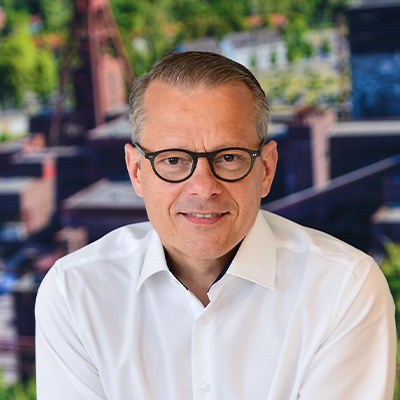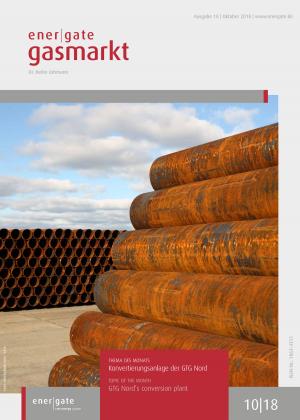This publication reported in the last edition that Mr Wiebes would propose to the second chamber of the parliament the reduction of production for the next gas year to 19.4 Bcm. Only a very small safety buffer for a cold year is provided for. For the current gas year, the safety buffer is 5.4 Bcm. In the letter to the parliament with the new proposal of August 24, Mr Wiebes openly addresses the issue of security of supply. In principle, Mr Wiebes writes, production should be at a level that guarantees security of supply. „Not more, but also not less“ should be produced. He also writes that in future security of supply might not be automatically given. Measures to reduce demand or to increase L-gas production from other sources (blending, conversion) might not be implemented fast enough. As an ultimate solution, interruptions of exports, regional networks or the supply of large industrial users might be unavoidable. However, Mr Wiebes admits that all three options might not be feasible. Even protected customers or – if large food producers are interrupted – the supply of food might be affected. In the Netherlands, there is currently a debate about whether the country is sufficiently prepared for a gas crisis situation. Whether Mr Wiebes will use his gloomy scenarios to urge the parliament to accept a higher safety net remains to be seen.
Stay up to date with the free Gasmarkt-Newsletter! We will inform you about new issues by e-mail and give you an insight into the contents.
- All Issues
- energate Gasmarkt
- Issue 10|18
- Issue title:
GTG Nord's conversion plant
- Publication date:
- 08.10.2018
- In this issue:
This edition has three main topics of the month: the GTG Nord conversion plant, biomethane and the German LNG terminals. To start from the back, I must say I was surprised about the dynamics around German LNG terminals. I made a bet that the Brunsbüttel terminal would never be built. To be quite honest, I think I will lose that bet. One crucial game changer is geopolitics. It is being said that the US is putting pressure on Europe to make an additional investment in LNG infrastructure and that Qatar is looking for new friends to counter its blockade by Saudi Arabia and its Arabian allies. Geopolitics seem to be re-establishing long-term bilateral relations in the gas industry that had been overcome through the market liberalisation.
This publication has repeatedly reported that the biomethane sector is not really on an upward trend. Figure 5 shows nicely how the number of plants has stagnated since 2016. This year, the market perspective for biomethane in all three segments deteriorated. This is the clear perception of Jane Hochi, managing director of Biogasrat, an association of the biomethane industry. ener|gate Gasmarkt talked to her about the development.CHP sector (or EEG sector) By far the most important sales market for biomethane is the CHP sector. The combined production of power and heat fuelled by biomethane is subsidised. The Law on Renewable Energies (EEG) is the legal foundation. However, after the revision of the law in 2014 (EEG 2014), subsidies were strongly restricted, and new projects are now hardly possible (this is the reason for the stagnation shown in Figure 4). However, Ms Hochi says that over the past years, the gas prices have gone down and, as a consequence, operators of biomethane-fuelled CHP plants are switching to natural gas. This is leading to a lower biomethane demand, and the operators of biomethane plants have to cope with oversupply and decreasing prices. The latest surge of natural gas prices has not changed the situation. Part of the problem is the expiration of long-term supply contracts for biomethane to CHP plants. The operators of biomethane plants have a “huge” problem because they cannot sell the volumes or have to make price concessions. According to data from the Deutsche Energie-Agentur (dena) Branchenbarometer (sector barometer), a total of 7.5 TWh were sold in the CHP market in 2017. For three years, the volumes have been stagnating at this level. “Our members are looking for new markets outside the EEG, but in these potential new markets the conditions are even worse”, Mrs Hochi complains. There will be more about these markets later on.
Sales Contact

Frequently Asked Questions
1. What is the energate Gasmarkt?
The energate Gasmarkt provides specialists and executives in the gas industry with up-to-date information and background information on the German and international gas market. The medium expertly explains the most important developments in the fields of market, law, politics and business. In addition, the energate Gasmarkt offers insider information such as market rumors and personal details.
2. What is the energate Jahresreport Gas?
The energate Jahresreport Gas traces the most important market developments of the year and provides a well-founded outlook for the coming months. Gas expert and insider Dr. Heiko Lohmann analyzes relevant events in politics, law and regulation as well as on generation, infrastructure and trade. In addition, the report provides information on changes in the corporate landscape and tracks price developments in market reports. Top decision-makers from the industry use the Jahresreport Gas as a compact chronicle of the year and to assess future market developments.
3. How often are these publications released and in which formats are they available?
The energate Gasmarkt is published monthly. Subscribers will receive the energate Gasmarkt as a print and PDF version in German and English. The Jahresreport Gas is published annually (beginning of December).
4. Can I purchase individual issues of the energate Gasmarkt?
Yes, you can purchase individual isses as print or PDF version. Payment options include purchase on account, credit card or PayPal.
5. How much is a subscription of the energate Gasmarkt and how much does the Jahresreport cost?
A subscription to the energate Gasmarkt (single licence) costs 110,- Euro/month (plus VAT). An edition of the Jahresreport Gas costs regularly 390,- euro (plus VAT).
6. Are there any special conditions if several employees in a company would like to receive the Gasmarkt?
With several Gasmarkt recipients in one company, the price of the second and all other licenses is reduced significantly. We are happy to make you a fair offer for team or corporate licenses!
7. What benefits do I get by registering?
A free energate account is required to order the energate Gasmarkt or the energate Jahresreport Gas. Registered users receive an overview of the contents of the current issue of energate Gasmarkt by e-mail on the day of publication.
8. I would like to read energate Gasmarkt or energate Jahresreport Gas digitally. Where can I find my e-paper version?
As a subscriber to energate Gasmarkt or as a purchaser of energate Jahresreport Gas, you will also receive an e-paper version in addition to the print edition. You can find it at online.energate-gasmarkt.de. Please use your energate account to log in.


